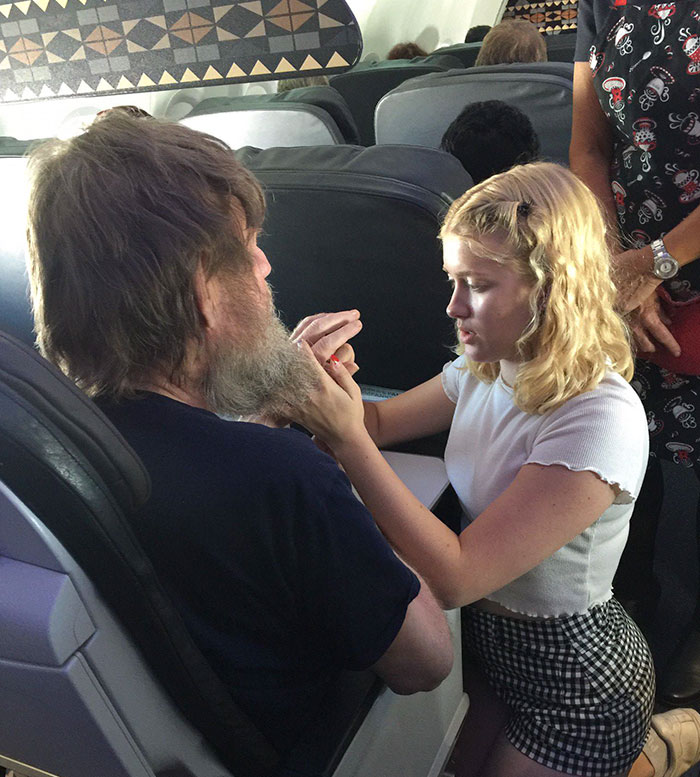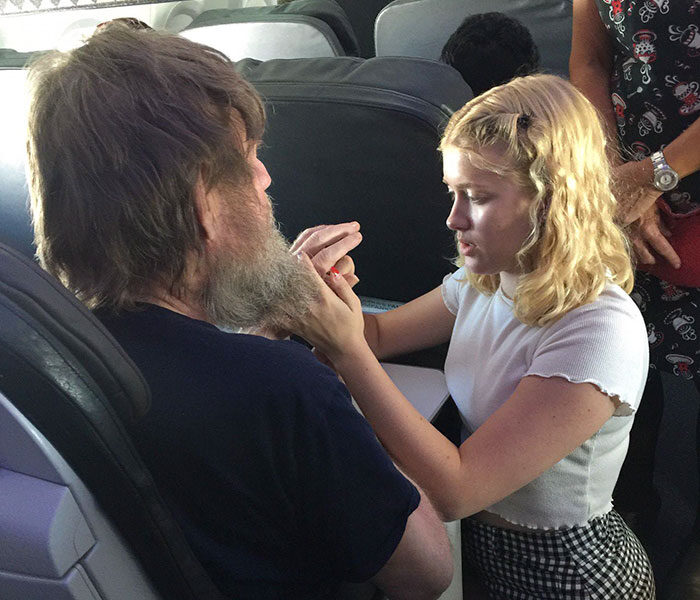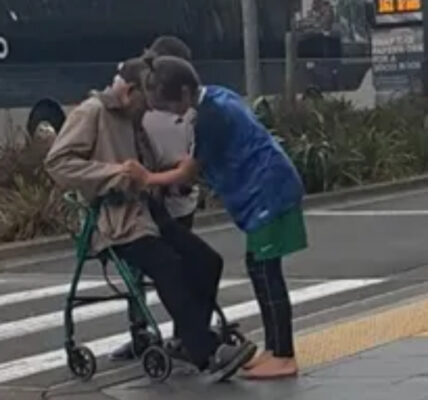
Airports aren’t known for quiet miracles. They’re usually filled with delays, rushed goodbyes, and tired travelers just trying to get somewhere else. But at Boston’s Logan Airport, on what seemed like an ordinary day, something extraordinary unfolded—quietly, without fanfare.
That’s where I first saw Tim.
He was standing beside his sister near the boarding gate, their interaction drawing gentle attention. She was signing into his hand—fingers moving with care and precision, pressing meaning into his palm. That’s when I realized: Tim was both deaf and blind. And yet, they were holding a full conversation, one that he could feel rather than hear or see.
Tim’s sister was only there to see him off. When it was time to board, she hugged him, signed a final few words into his hand, and handed him off to the airline staff.
He was now traveling alone.
Tim had been assigned the middle seat in my row. The gentleman who had the aisle seat—without hesitation—stood and offered it to him. No need to ask. No fuss. Just kindness, passed silently from one stranger to another.

As the flight attendants helped Tim to his seat, it became clear they were uncertain how to communicate. He reached out—his hand brushing their arms, faces—trying to understand, trying to connect. Not a single one flinched. Instead, they took his hand, tried gestures, facial expressions, any form of touch they thought might help. They offered help with drinks and meals, trying to interpret his needs. Still, much of it was guesswork.
And then something beautiful happened.
Someone suggested a page over the intercom:
“Is there anyone onboard who knows sign language?”
That’s when Clara stepped forward.
Fifteen years old.
She explained that she had learned American Sign Language (ASL) because she struggled with dyslexia, and ASL had been the easiest second language for her to pick up.

She didn’t hesitate. She took the seat beside Tim and began to sign—not in the air, but into his hand. One letter at a time.
And just like that, a door opened.
Tim’s face lit up.
The confusion fell away.
The joy was immediate.
What followed was nothing short of magical. They carried on a lively conversation for the rest of the flight. He “read” her fingers like a lifeline. He asked her questions, laughed at her jokes. When he asked if she was pretty, Clara blushed and giggled—and the gentleman beside her, who had been watching and learning a few signs himself, enthusiastically signed yes.
Those of us in the surrounding rows were witnesses to something truly rare.
Laughter. Smiles. Warmth.
Passengers leaned in, offered help, and shared in the moment—not as travelers, but as a human family.
The Alaska Airlines crew never stopped trying. They brought extra blankets, helped with his food, checked in often. Every single person went above and beyond, not because they had to—but because they wanted to.
And Clara?
She never once acted like she was doing anything heroic.
She just saw someone in need… and answered.
In a time when headlines are so often filled with division, despair, and disconnection, this was something different. This was unity. Compassion. Community.
One man who couldn’t see or hear.
One girl who learned to speak with her hands.
And an entire plane full of strangers who became a village.
That day, at 30,000 feet, humanity soared a little higher.
And I was lucky enough to witness it.
There are still good, good people in this world. Don’t ever forget that.




